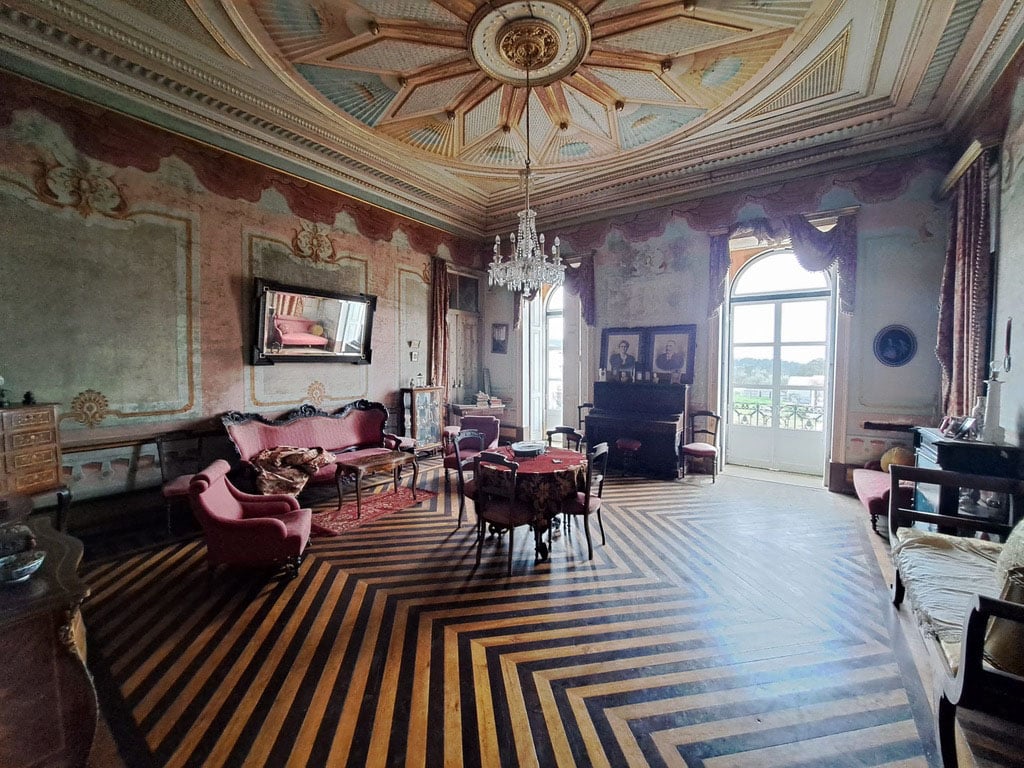One inevitable consequence of the rise in popularity and price of properties located in Portugal’s inland Central Region is the offer for sale of substantial homes that have been in the same family for generations, never being sold on the open market.
In Pedrógão Pequeno, in the Castelo Branco region’s municipality of Sertã, a mansion has come on the market for the first time since its construction in the late 1800s. Built for the lawyer Joaquim Henriques Vidigal, money was no object after his return from a financially successful period in Brazil, following in his father Ângelo Vidigal’s footsteps.
Vidigal property, Pedrógão Pequeno
The energetic Joaquim clearly had inherited the knack of making money and returned to build his ‘palacete’ a few hundred metres from Quinta da Rocha, where he had spent his childhood. This generous man enjoyed a well-funded retirement while busying himself in local politics and good works until his death in 1913, leaving widow Maria Ângela and their five sons to inherit.
Well over a century later, the property is for sale outside the family for the first time in its history. The advantage of buying this property is that successive family inheritors have looked after it while leaving the interior without modern additions.
There is a world of financial difference between an original family mansion that has been looked after and one that has been abandoned and unmaintained.
Castanheira de Pera country house
Another ‘one careful family owner’ property came on the market late last year, near Castanheira de Pera, in the Leiria district. Built in the 1920s, this family home and outbuildings were sold by auction. Clearly, the upkeep of the property was too much for the elderly owners who had decided that the family home would have to go. The roof is good and the interior original, but the new owner still should budget to spend the same again to bring the property into the 21st century.
Asking a local building contractor for a cost estimate for restoration of either of the above properties is a ‘piece of string’ question. In addition to praying that the roof structure does not need replacing, a complete overhaul will involve careful analysis of every part of the property to see if a more current, open-plan interior can be designed without damaging the authenticity of the original.
Some family-owned properties have been abandoned and left to decay to the point where the best option is to keep the façade and build a new structure behind.

Town centre former family home, Pedrógão Grande
This family home sits in Leiria region’s town of Pedrógão Grande. It is one of two properties in the same street, both large family homes originally constructed by two successful brothers whose business acumen ensured near-domination of the local forestry and agriculture sectors.
Descendants of one branch of the family live in a beautiful and well-maintained mansion while the other property, 50 metres up the road, has not been lived in for decades, its wooden floors rotting with age and walls damaged by rainwater.
The reason for this property now being on the market may be that any further deterioration will result in collapse and the need for demolition. As a result of this poor economic prognosis for the family-held asset, it is “the first time in over 40 years that the family owners have all agreed to sell.”
Buyers without adequate budgets should beware of this type of property, however tempting life in a grand house might seem. Renovation and restoration projects easily can overrun in time and cost. However, those with resources and the right team can end up with astonishingly good value properties along with the satisfaction of preserving part of Portugal’s privately owned patrimony.
The Vidigal property is for sale at €600,000 (€434 per m2) with 1.5 hectares of land.
The Pedrógão Grande house is for sale at €260,000, (€202 per m2) on 0.25 of a hectare, a low price that reflects the high cost of renovation. Its historic centre location is ideal for a boutique hotel; certainly, this way forward will have the full support, expertise, and encouragement of the local Câmara. This is a development opportunity that fired the collective imagination of the team from Portimão’s ConceptoStudio on its recent visit to the town at the invitation of the director of Rural Properties.
Price per square metre of these grand old family homes reflects not only the location but also the amount of work needed to restore and breathe new life into these untouched beauties, unaffected by any ‘improvements’ and extensions.
Buyers of these larger properties have the opportunity to create exceptional homes, tourism rental business or small hotels at a fraction of the cost paid in higher-density locations, along with the lifestyle, cost of living and health benefits enjoyed by an increasing number of new residents of Portugal’s buoyant Central Region.
By Paul Rees
The author runs Rural Properties, an innovative business that invests in the Central Region, buying, renovating and selling properties. For investment enquiries: www.rural-properties.com or contact info@rural-properties.com




















